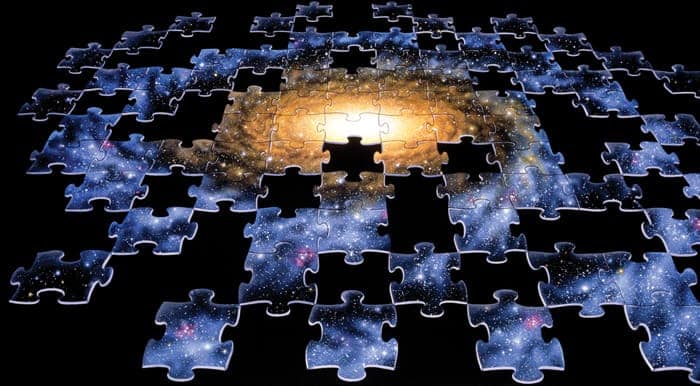
Ancient rocks hidden deep underground could hold important clues about the nature of dark matter – according to physicists in Sweden and Poland. The idea is that dark-matter collisions should create nanoscale defects in the crystalline structure of rock – and this damage could be measured using modern microscopy techniques. Indeed, the team estimates that hundreds of thousands of defects could be present in just one cubic centimetre of rock.
A wealth of astronomical and cosmological evidence suggests that dark matter accounts for about 85% of matter in the universe, however, physicists have yet to make a direct detection of dark-matter particles. One possible candidate for dark matter are the weakly-interacting massive particles (WIMPs), hypothetical particles that only interact with normal matter through weak or gravitational forces.
While physicists have built a number of WIMPs detectors worldwide, none have managed to observe the elusive particles. These detectors tend to use large volumes of material and run over several years in the hope of seeing just a handful of collisions between WIMPs at atomic nuclei.
Now, Patrick Stengel at Stockholm University and his colleagues propose a simpler approach. They suggest that over billion-year timescales, WIMPs could have interacted many times with ancient rocks. The nuclear recoils induced by these interactions would have left characteristic, nanometre-wide damage tracks in the rocks, which are then preserved for billions of years.
This is not a new idea, but just like conventional dark-matter detectors, background radiation from cosmic rays and nuclear fission creates huge numbers of tracks that are difficult to discern from those created by dark matter. To minimize this background, Stengel and colleagues want to look at rock extracted from deep boreholes (about 10 km underground) to obtain samples that have been shielded for significant amounts of time from cosmic radiation. WIMP-induced tracks would also be easier to observe in materials like marine sediments and ultrabasic rocks, which are largely free of radioactive contaminants and can be found at suitable depths.

What is the nature of the dark universe?
In addition, Stengel’s team show that detection techniques have vastly improved since earlier experiments. Using helium-ion beam microscopy, the physicists demonstrate that milligram-sized samples can be imaged at the nanometre-scale; providing the resolution needed to detect the tracks left by lower-mass WIMPs. Evidence for heavier WIMPs could also be found using small-angle X-ray scattering; although this would provide lower resolutions, tracks left by higher-mass particles could be found in samples as large as 100 g.
Strengel and colleagues concluded that a rock-based search would be many orders of magnitude more sensitive to lower-mass WIMPs than current detectors, and around 100 times more effective for heavier particles.
The proposal is described in Physical Review D.



